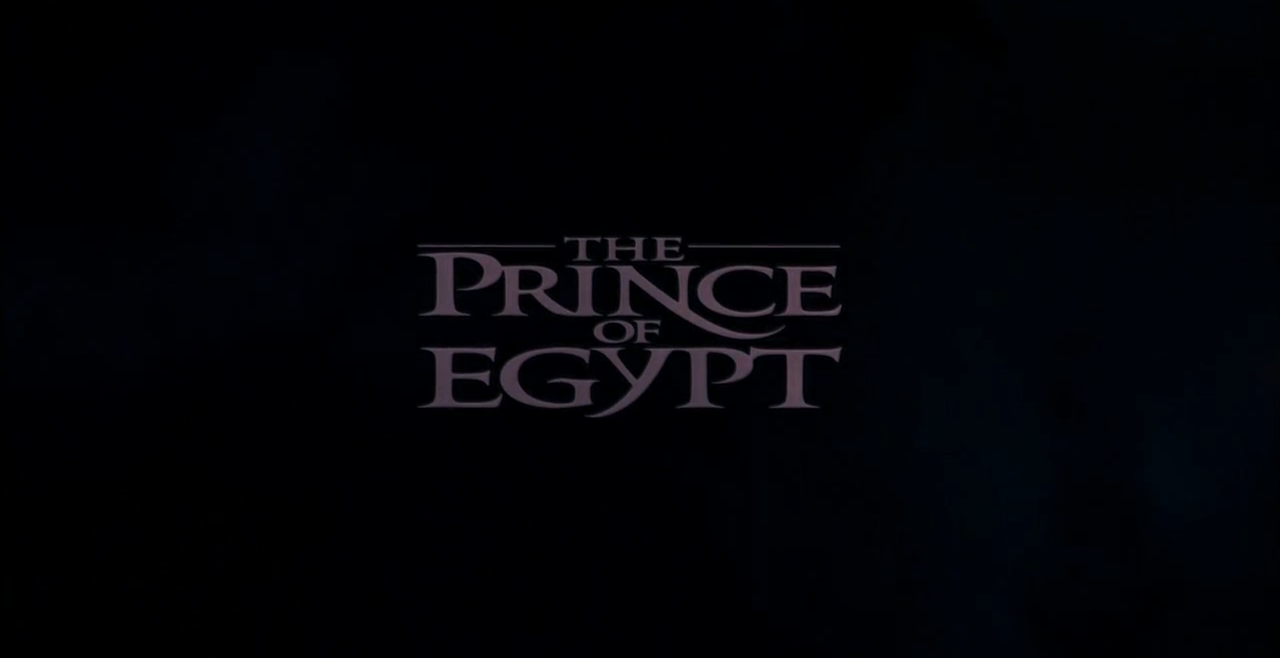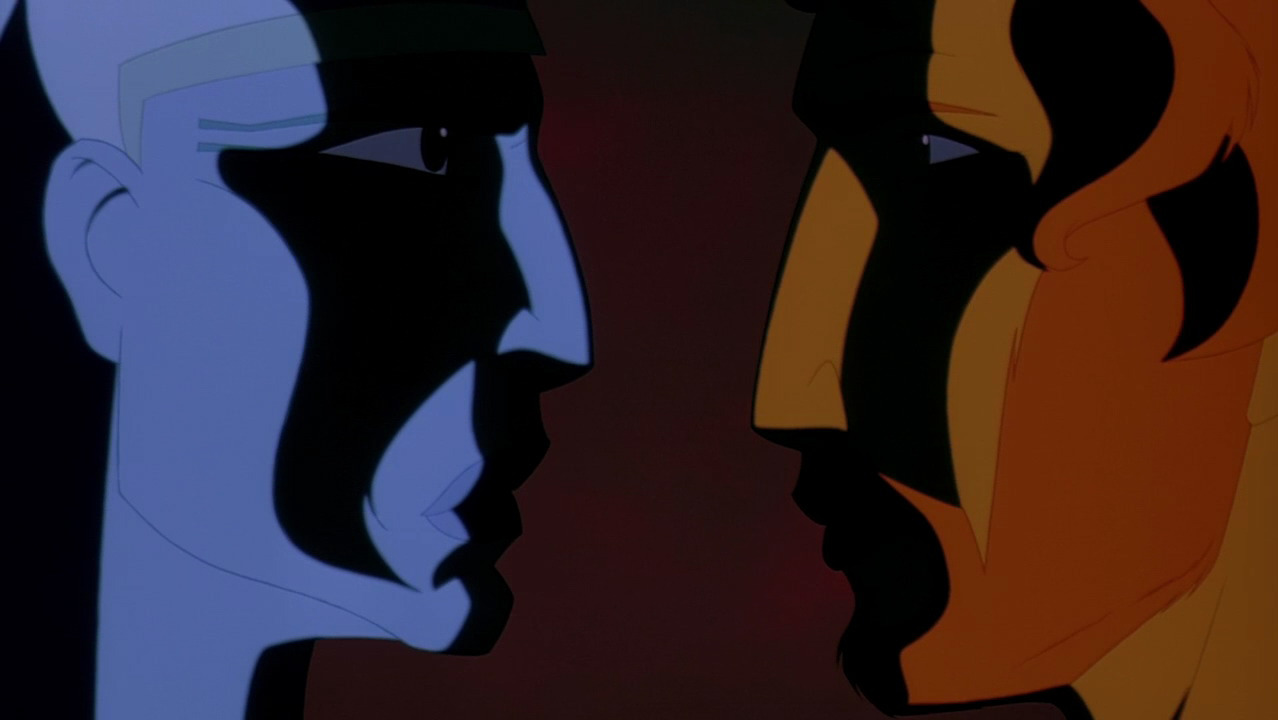
Jeffrey Katzenberg, co-founder of DreamWorks Animation, often suggested an animated adaptation of 1956’s The Ten Commandments while still working at Disney; although Disney CEO Michael Eisner dismissed the idea, fellow DreamWorks co-founder Steven Spielberg suggested it as DreamWorks Animation’s inaugural film. Even though it was usurped by Antz, which was rushed into theaters to compete with Pixar’s A Bug’s Life, The Prince of Egypt still made it to theaters in time for the 1998 holiday season.
Directed by Brenda Chapman (Brave), Steve Hickner (Bee Movie), and Simon Wells (Balto, Mars Needs Moms), the animated take on the story of Moses and the Hebrews of Egypt featured a star-studded cast, an extremely dedicated production team, and the musical genius of Hans Zimmer and Stephen Schwartz (The Hunchback of Notre Dame, Wicked) together.

“The motion picture you are about to see is an adaptation of the Exodus story.
While artistic and historical license has been taken, we believe that this film is true to the essence, values and integrity of a story that is a cornerstone of faith for millions of people worldwide.
The biblical story of Moses can be found in the book of Exodus.”
The black screen and opening text, accompanied by Hans Zimmer’s beautiful opening score, is a soft prelude to a harsh opening scene, featuring hundreds of slaves working under brutal conditions.
Schwartz’s compelling “Deliver Us” rises with the brutality as we witness the Egyptian soldiers forcibly removing Hebrew babies from their homes.
But still a moment of softness: Yocheved sings her last lullaby to the baby Moses as she sets him afloat along the river to save his life.
For an animated film to take on such real and harsh human experiences is unusual within itself; but The Prince of Egypt does so almost unflinchingly, without extra sugarcoating or condescension toward the presumably, and largely, youthful audience.
Production Design & Animation

An immersive film, often praised for its beauty, The Prince of Egypt was created with a determination for detail. A crew of 350 people, from over thirty different nations, some pulled from Disney or Spielberg’s disbanded Amblimation, worked tirelessly to create the over 1,190 scenes in the film. Visual development, headed by art directors Kathy Altieri and Richard Chavez and Production Designer Darek Gogol, meant a visual style reflective of the grand scale and architectural monoliths of Ancient Egypt, with wide spanning views of the buildings, monuments, and locations. Over 930 hand-painted backgrounds were created alone – and the artistry shines through in every scene.
That level of detail carried through in other areas of the film, from the studious depictions of the various ethnicities seen in the films–Egyptians, Hebrews, Nubians, etc.–to the special effects departments extensive animations for everything non-character. The blend of traditional animation and computer-generated imagery comes to the forefront, for example, in scenes of the plagues through Egypt, the incredible parting of the Red Sea, and Moses meeting with the Burning Bush.
The Voice of God
While the music department of most animated films focuses solely on the music, sound editor Lon Bender worked with this music team on a new and inspiring challenge: creating the voice of God.
God’s many and varied depictions previous featured a large booming voice, emanating from the heavens if not directly from a human form. Bender chose a different tone, one that possibly stands as the most spiritually touching:
“We were trying to create something that had never been previously heard not only from a casting standpoint but from a voice manipulation standpoint as well. The solution was to use the voice of actor Val Kilmer to suggest the kind of voice we hear inside our own heads in our everyday lives, as opposed to the larger than life tones with which God has been endowed in prior cinematic incarnations.”
Using that inner voice, something so familiar and real, to create a God that truly does feel like part of his own believers. The scene of Moses and the Burning Bush is one that moves the senses and the spirit in a way of comfort, rather than overwhelming with sheer power or striking fear into the hearts of men.
The Music

Stephen Schwartz, known for songs and music in several animated films, began writing songs for The Prince of Egypt from the beginning of the production stage, evolving the music as the story itself evolved.
“Deliver Us”, the opening song, remains one of the most well-known and stunning musical numbers of the film, its theme included in the score several times. The other numbers, performed by the voice cast in most cases, help to carry the story as well as carry the emotional tone. While Michelle Pfeiffer, Ralph Fiennes, Steve Martin, and Martin Short sang for themselves, other voices were brought in, such as Amick Byram for Val Kilmer, despite his vocal abilities in other films (sorry, ladies and gents, that’s not Batman singing); Linda Dee Shayne for Dame Helen Mirren, singing Queen Tuya’s reprise of “All I Ever Wanted”; and Sally Dworsky (Nala singing, The Lion King) for Sandra Bullock, singing “When You Believe.”
As a fun fact, Brenda Chapman herself sings Miriam’s reprise of mother Yocheved’s “River Lullaby.” Originally intended as a scratch audio track, the recording was so well liked, it remained in the film as a loving personal touch from the director.
Hotep and Huy’s number, “Playing with the Big Boys,” is often the song of controversy, on the other hand. Some feel the song is too light, too out of place. But despite the comic value of Steve Martin and Martin Short, that comedy is generally underplayed throughout the film. There are few moments of outright humor, if any, punctuated with little slapstick. “Playing with the Big Boys” feels sinister, not humorous, the song of two questionable priests attempting to frighten off a man who threatens their comfortable positions, their revered status, their very lives. To me, this never felt like a comedic song to lighten the mood.
The score itself, composed by the incomparable Hans Zimmer, is gorgeous and embracing, sweeping over the film with strength. Zimmer’s score expands the film even further, serving as yet another beautiful way to touch the audience’s spirits.
The Film
A film of determined accuracy, of comprehensive detail, The Prince of Egypt stands as a breathtaking film in the DreamWorks Animation canon. Released in December 1998, the film was the second non-Disney animated feature to gross over $100 million in the US box office; it stood as the top-grossing non-Disney animated film, until the stop-motion Chicken Run in 2000, and the highest grossing traditionally animated non-Disney film until Fox’s The Simpsons Movie in 2007. Although critical reception places it at mid-range, the film received high praise from multiple critics, for its beauty and its story.
The Prince of Egypt’s craftsmanship and devotion enables the film to become its own small miracle: a story from a religious mythos drawn back to the human experience, to be embraced by any audience, regardless of their religious faith, or lack thereof.
The Prince of Egypt is not merely an adapted animated story from the Bible; the film is a story of a people, led by a humbled man, and lifted by courage against injustice and oppression, a story that resonates just as easily with today’s audiences as it did with the film’s international audience in 1998.

The Prince of Egypt stage musical will debut at TheatreWorks in Palo Alto, California on Oct 14, 2017.
Edited by: Morgan Stradling





